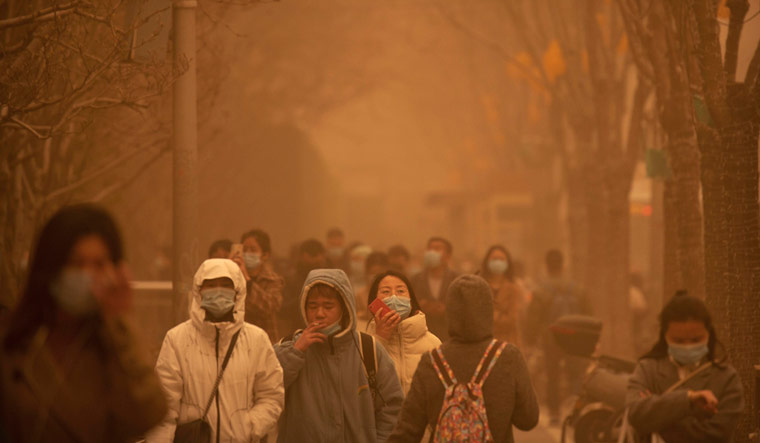Beijing was shrouded in thick brown dust, as the China Meteorological Administration announced a yellow alert on Monday. Pollution levels were sent soaring as heavy winds blew in from the Gobi desert and parts of northwestern China. The meteorological department called it the biggest sandstorm in a decade.
Heavy winds brought in sand from Inner Mongolia to the provinces of Gansu, Shanxi and Hebei, which surrounds Beijing, Reuters reported.
At least 341 people were reported missing s a result of the storm. Readings of PM2.5 smaller particles that infiltrate the lungs had reached a maximum capacity of 500, which were far higher than China’s standard of 35 micrograms.
The World Health Organisation recommends average daily PM 10 concentrations of no more than 50 micrograms.
Beijing faces regular sandstorms in March and April due to its proximity to the massive Gobi desert. Other reasons like deforestation and soil erosion contribute to this. Beijing government has asked schools to cancel outdoor activities.
China has been attempting to reforest and restore the ecology of the region. Beijing has planted a “great green wall” of trees and created air corridors to channel the wind and allow sand and other pollutants to pass through more quickly.





